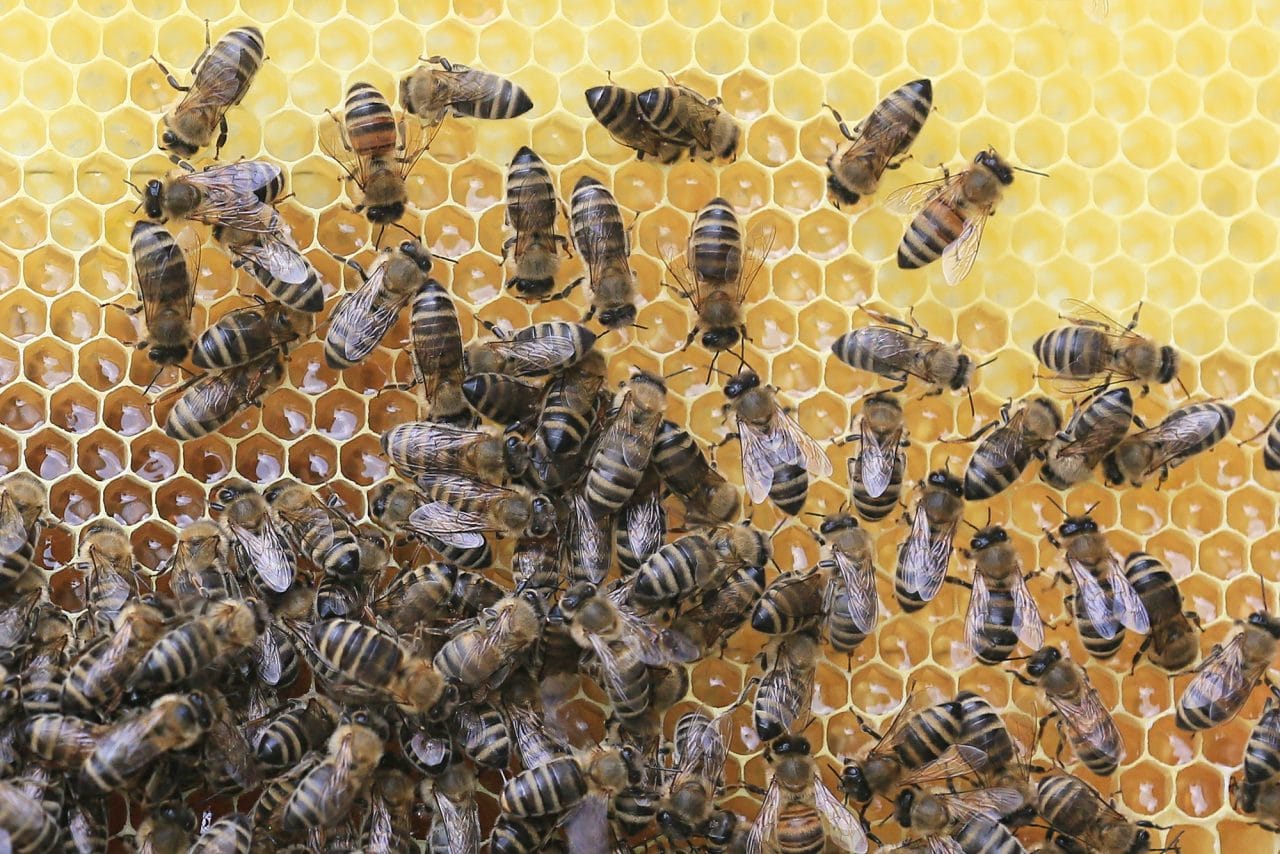Dangerous levels of neonicotinoid insecticides have been found in 75% of the world’s honey samples, reveals a new study.
Published on 6 October by Mitchell et al in the journal Science, the study identifies ‘widespread’ contamination of neonicotinoid insecticides in 198 global honey samples collected from local producers. While the compounds occurred at levels ‘considered safe for human consumption’, the same cannot be said about bees, for whom the levels detected are understood to be highly dangerous. The findings of the report add to existing concerns over the decline in bee populations and highlight the global scale of the problem.
“Most honey sampled from around the world between 2012 and 2016 contained neonicotinoids at levels known to be neuroactive in bees,” the authors state.
The analyses showed North American honey to possess the highest rates of contamination, with 86% of samples containing one or more neonicotinoid. Asia and Europe followed closely behind at 80% and 79% respectively. Samples taken from South America showed the lowest frequencies at 57%.
“It is hard to imagine the scientific evidence of the terrible damage to wildlife caused by neonicotinoids getting any stronger”
While the authors note that the concentrations are ‘often very low’, the report states that the pesticides themselves are toxic, and exposure to them could have adverse effects on the neurological function of a bee’s brain.
“The reason why chronic exposure is a greater risk to bees becomes clear when we consider how the pesticide acts. Neonicotinoids target the nicotinic acetylcholine receptors in the insect brain, which are responsible for learning and memory. Acute hyperactivation of these receptors by neonicotinoids leads to seizure-like activity, followed by a block in action potential firing that makes bee brain cells (neurons) nonresponsive,” warns the report.
The research has been welcomed by the Soil Association (SA), which sees honey as a useful indicator of the levels of damaging pesticides found in the landscape, due to the long distances bees travel in their collection of pollen and nectar. Georgia Farnworth, policy officer at the SA, says: “This confirms what we and other NGOs have been saying for years. As one of the government’s chief scientific advisors recently admitted, ‘assumed safety of widespread pesticide use is false’. It is hard to imagine the scientific evidence of the terrible damage to wildlife caused by neonicotinoids getting any stronger.”











